Theme park designer Brian Morrow ‘97 unleashed his creativity to win HGTV’s “Table Wars”.
By Derek Herscovici ’14

If you need a dream brought to life, Brian Morrow is your guy. A theme park designer with more than 25 years of experience and owner/creative principal of B Morrow Productions, his job is making awe-inspiring fantasies a reality.
But he was challenged like never before as a contestant on HGTV’s “Table Wars,” where competitors designed immersive ensembles for upscale dinner parties. The show required him to draw on every facet of his career, constantly upping the ante while wowing celebrity judges Martha Stewart and Chris Hessney.
But when the timers stopped and the last fork was laid, Morrow was declared the first-ever “Table Wars” champion. While the title (and the $50,000 prize) are great, it was the experience itself he enjoyed most.
“I went on ‘Table Wars’ to reignite my level of passion for design,” said Morrow from his office in Orlando, Fla. “I’ve had my own business for many years. I’ve been in corporate America and theme parks for many, many years, [but] it’s been a long time since I’ve been challenged in that way. I said in one of the episodes it’s like I reconnected with my 27-year-old self.”

Brian Morrow overseeing construction of Wave Breaker at SeaWorld San Antonio, North America’s only jet-ski style coaster.
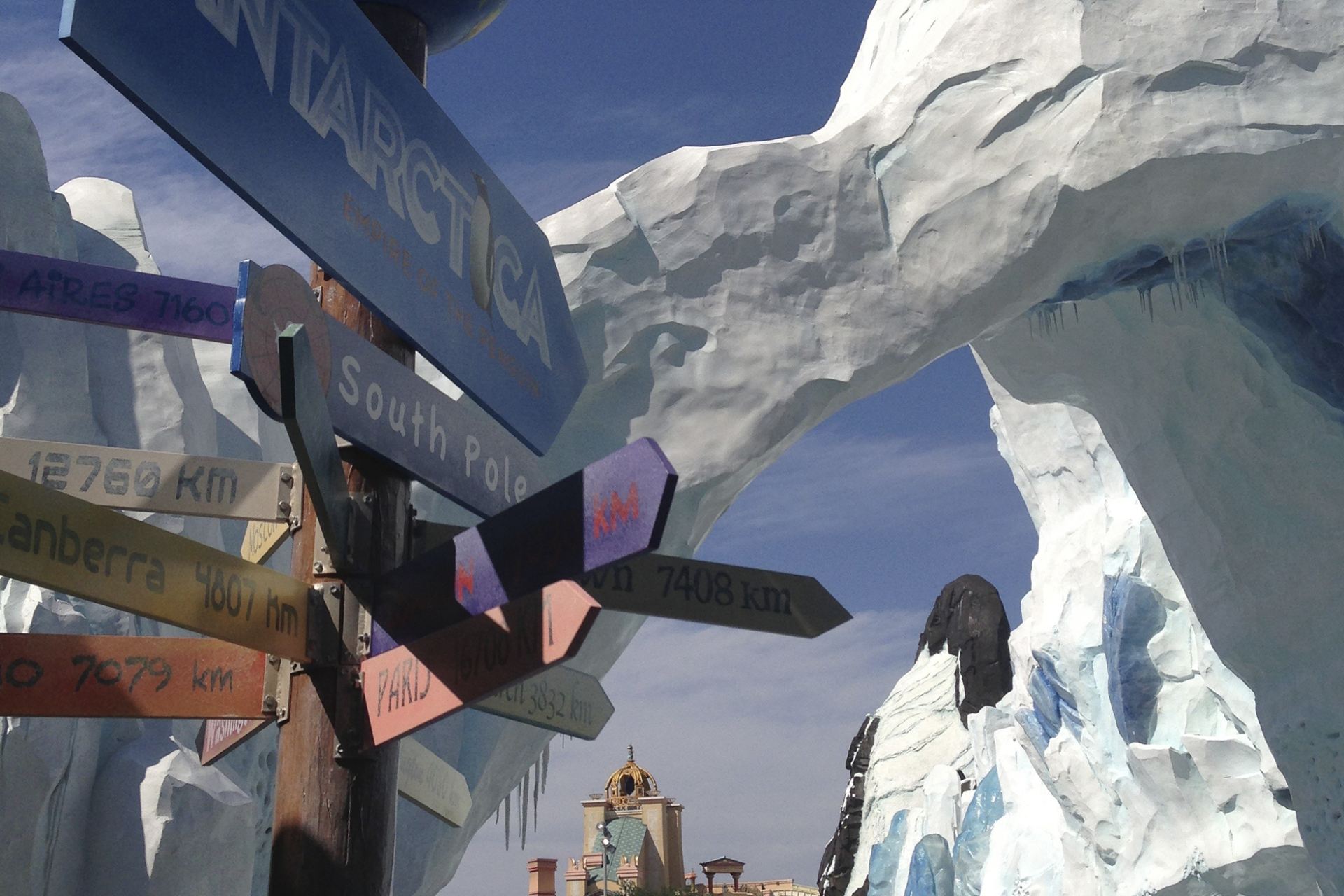
Entrance to Antarctica: Empire of the Penguin, designed by B Morrow Productions for SeaWorld Orlando.
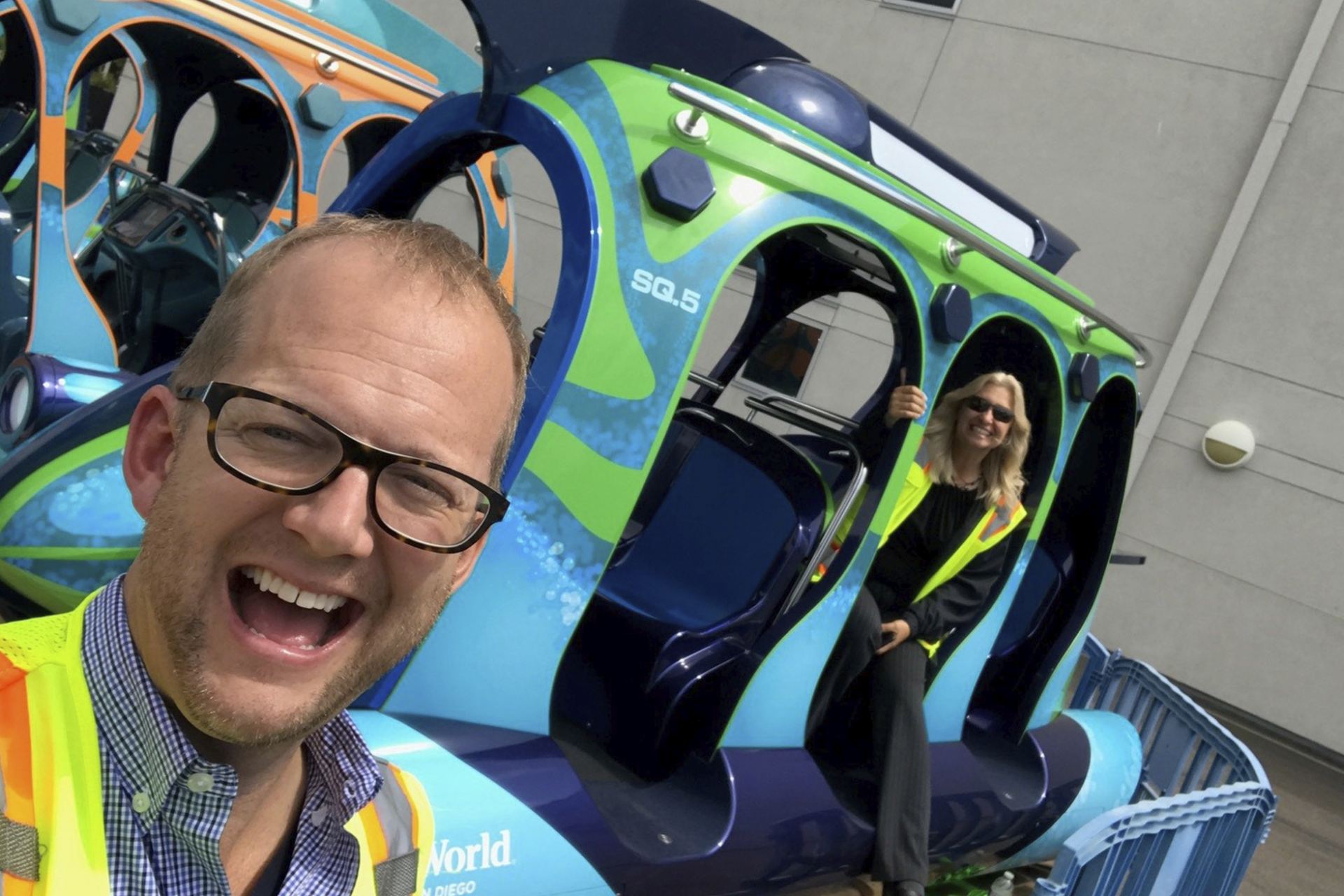
Morrow and a B Morrow Productions team member beside Submarine Quest at SeaWorld San Diego.
Storytelling comes naturally to Morrow. As a kid building model trains in his Tennessee basement, he spent more time designing the surrounding landscape than the trains themselves. Though he now uses industry terms like “environmental design” to describe his methods, back then he already understood how to create an immersive atmosphere. When he eventually coupled that with his engineering background, it became a potent combination.
A mechanical engineering major at Auburn, Morrow wanted to work in the theme park industry despite hearing there were no internships available. He cold-called companies and took alternating school quarters off to get hands-on experience. Days after earning his degree—in civil engineering—he was in Orlando, Fla. looking for work and holding a resume to back it up.
Over the next two decades he would do all manner of theme park engineering, including revamping the legendary “Big Bad Wolf” roller coaster at Busch Gardens Virginia with the first vertical drop in North America—an innovation that required a hair-raising test ride in a German shipyard.
“They didn’t have seatbelts, so they strapped us in with rope tied around our waist,” Morrow laughed. “It was the scariest thing I’ve ever done. I was like this thing could all go wrong in a minute, but you know it was really incredible. And, because our ride was inside and in the dark, we blindfolded ourselves and rode it again.”
“I learned that I can really trust my gut on what I’m capable of doing.”
Since 2018, B Morrow Productions has overseen projects for location-based entertainment around the country, including décor and productions for luxury hotels, master planning for theme parks and all types of detailed experiential design.
But when he auditioned for “Table Wars,” Morrow sought a new challenge. Across six episodes, contestants were pushed to create larger, more intricate creations, each with their own unique challenges. They also had to master precise table settings down to the centimeter, a challenge none of them were prepared for.
But while the engineer was up against interior designers, master florists and wedding planners, Morrow was fearless in envisioning—and ultimately executing—concepts that wowed judges and guests.
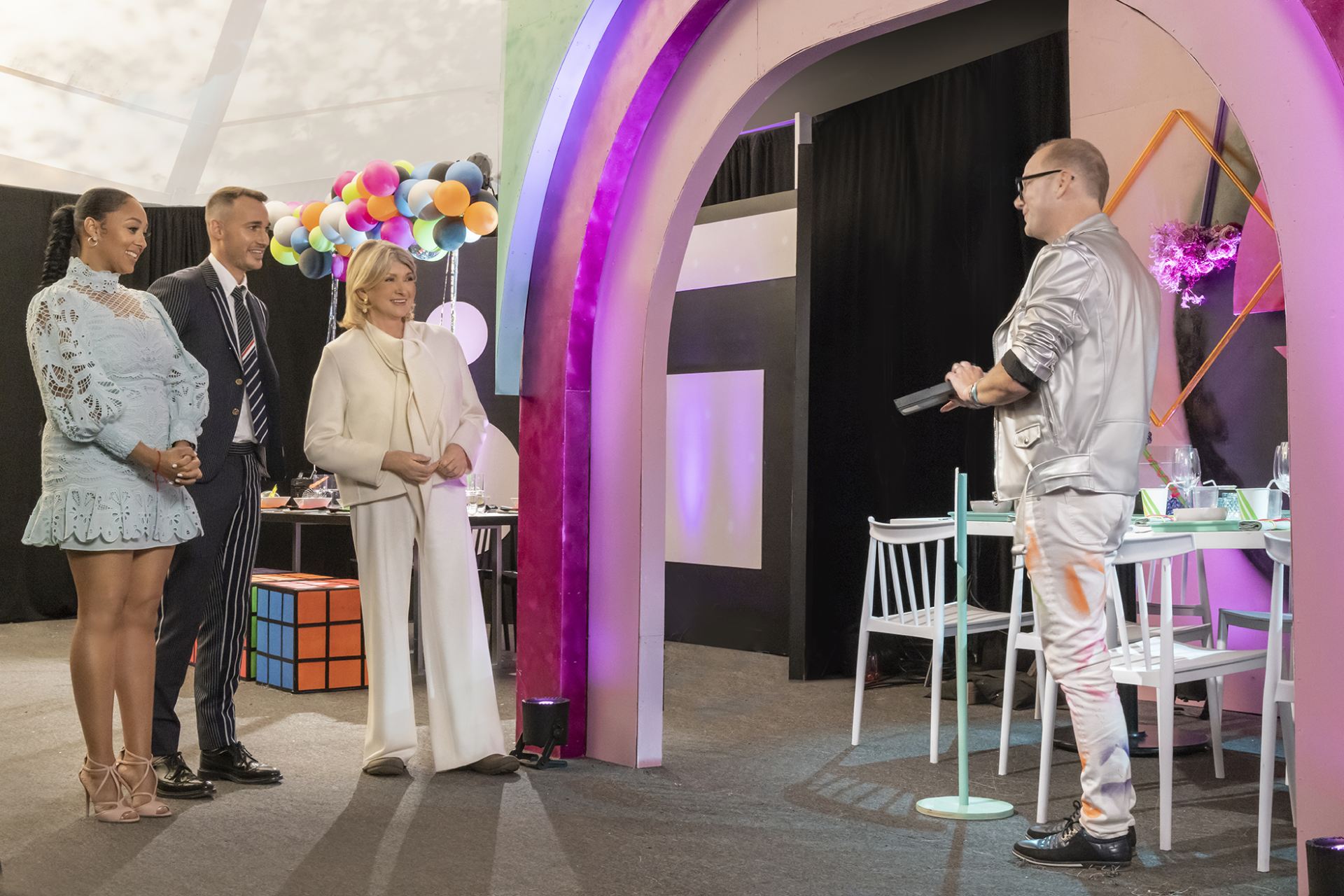
Morrow explains the details of his ‘80s-themed table setting—a mall’s food court— to host Tamera Mowry Housley (left) and judges Chris Hessney and Martha Stewart.
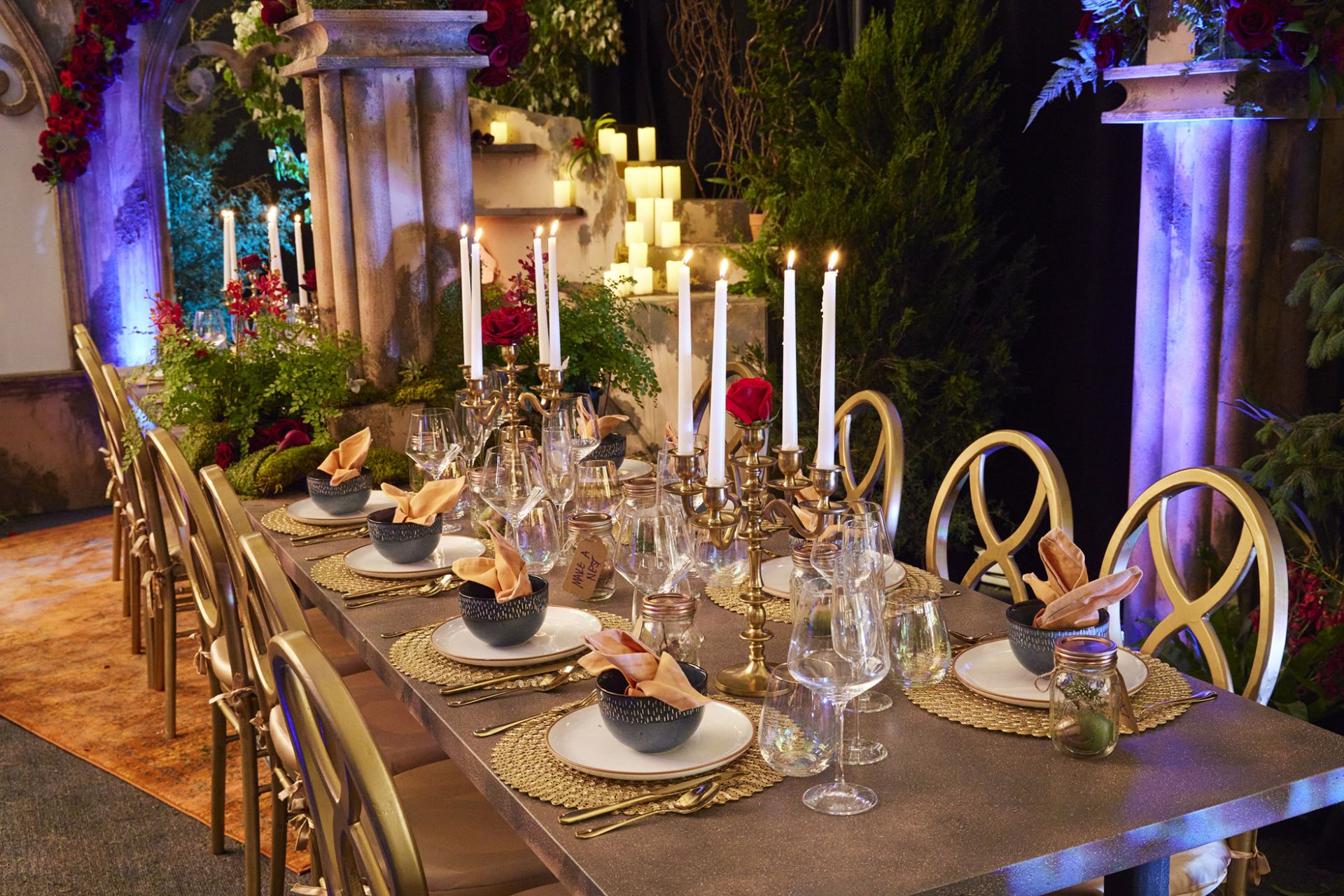
The setting that won HGTV’s “Table Wars,” a fairytale castle complete with ruins, a CGI dragon and “dragon-egg terrariums” as take-home gifts.
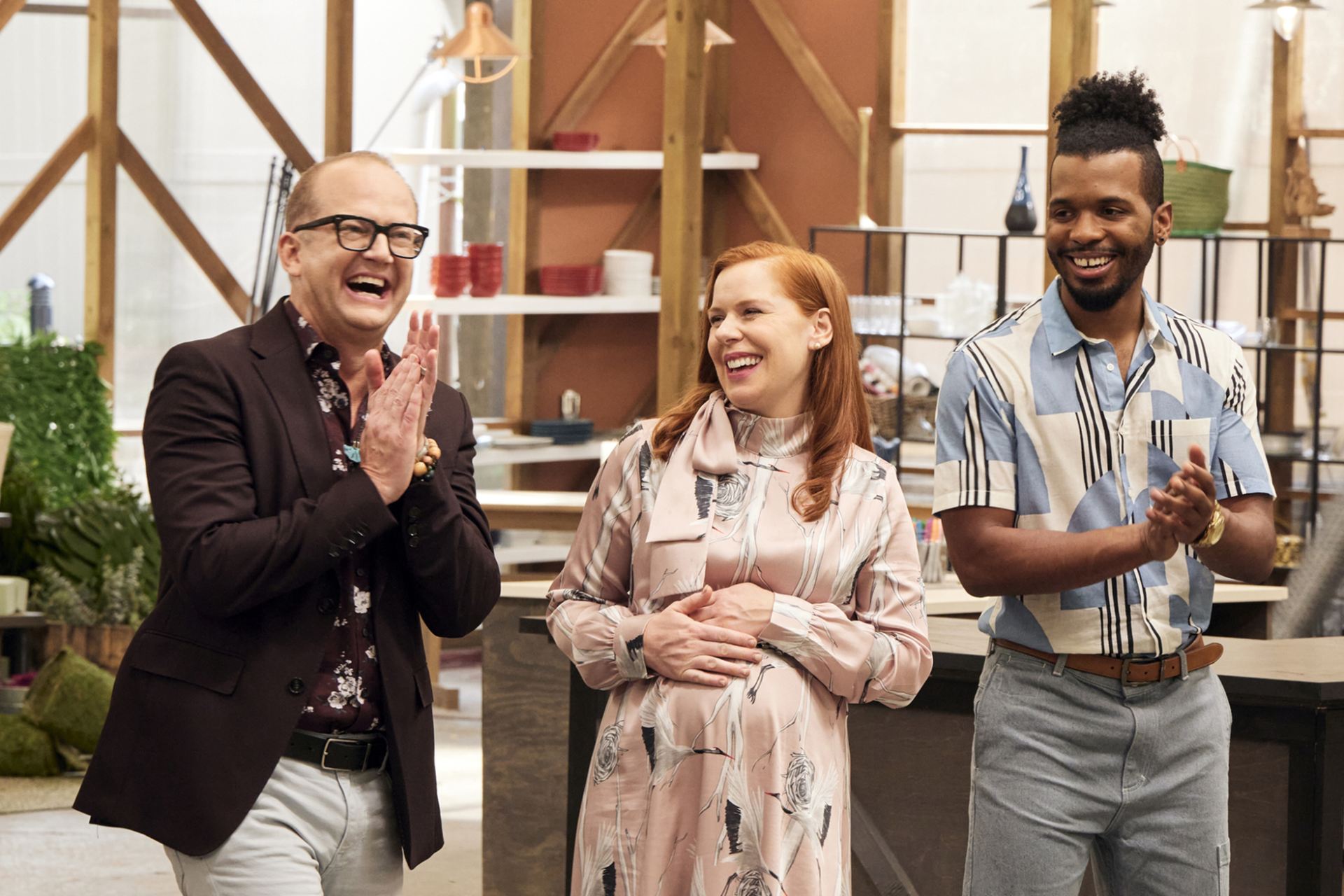
Morrow with the final two contestants of “Table Wars, Jenevieve Penk (center) and Carlton Lee Jr.
“I was one of the leaders of the pack building bigger things, more complicated things, and I’m comfortable doing that because when I was in Auburn, we learned how to hand-draft. I could very quickly create loose construction drawings that the carpenters could then use.”
An undeniable factor in Morrow’s success was his attention to detail. Other contestants struggled to explain their designs, but he focused on ideas that could be understood immediately. Once he figured out where the cameras and judges would view his installation, he learned how to build for maximum visual effect.
For the final challenge, contestants had to create a fantasy-themed dinner for 16 that had to include an interactive feature and take-home gifts for guests. Morrow built massive castle ruins around the dinner table that were painted to look stunningly authentic. A smoke-breathing CGI dragon fluttered outside a gothic-style window and “dragon eggs” inside Mason jar terrariums propelled him to victory.
When he emerged from the show “bubble,” Morrow had a new appreciation—not only for the scope of his chosen profession, but for the talent and experience he grew along the way.
“I think I learned that I can really trust my gut on what I’m capable of doing—I still have those chops to do big, bold things that people might not be expecting me to do,” said Morrow. “It reinvigorated that fire of invention and creativity in me.”
Design your own dinner party
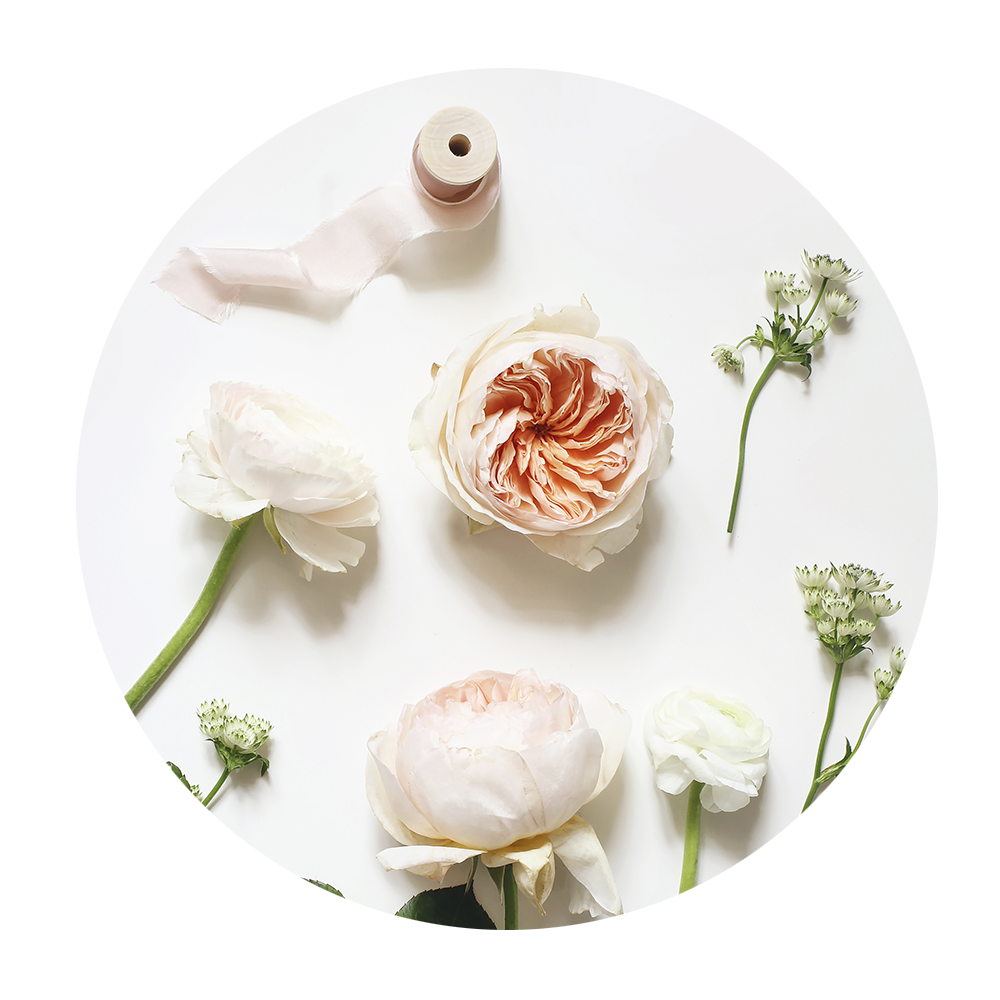
Use what you have at home
“Don’t go buy a bunch of things and put it all together, lay out the stuff you could potentially use and then figure out your visual story.”
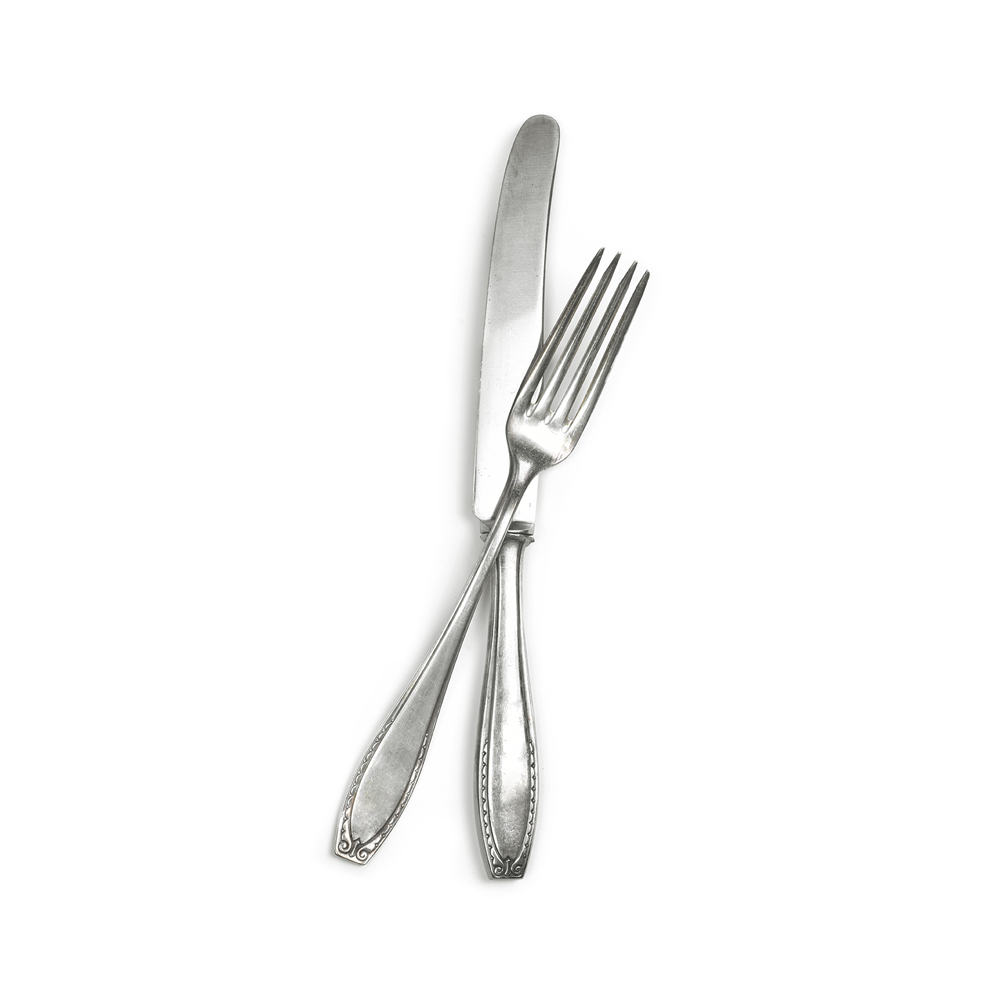
Don't get hung up on flatware
“My big trick I do to make life easy is put all the cutlery in the mason jar and let and people take what they want.”
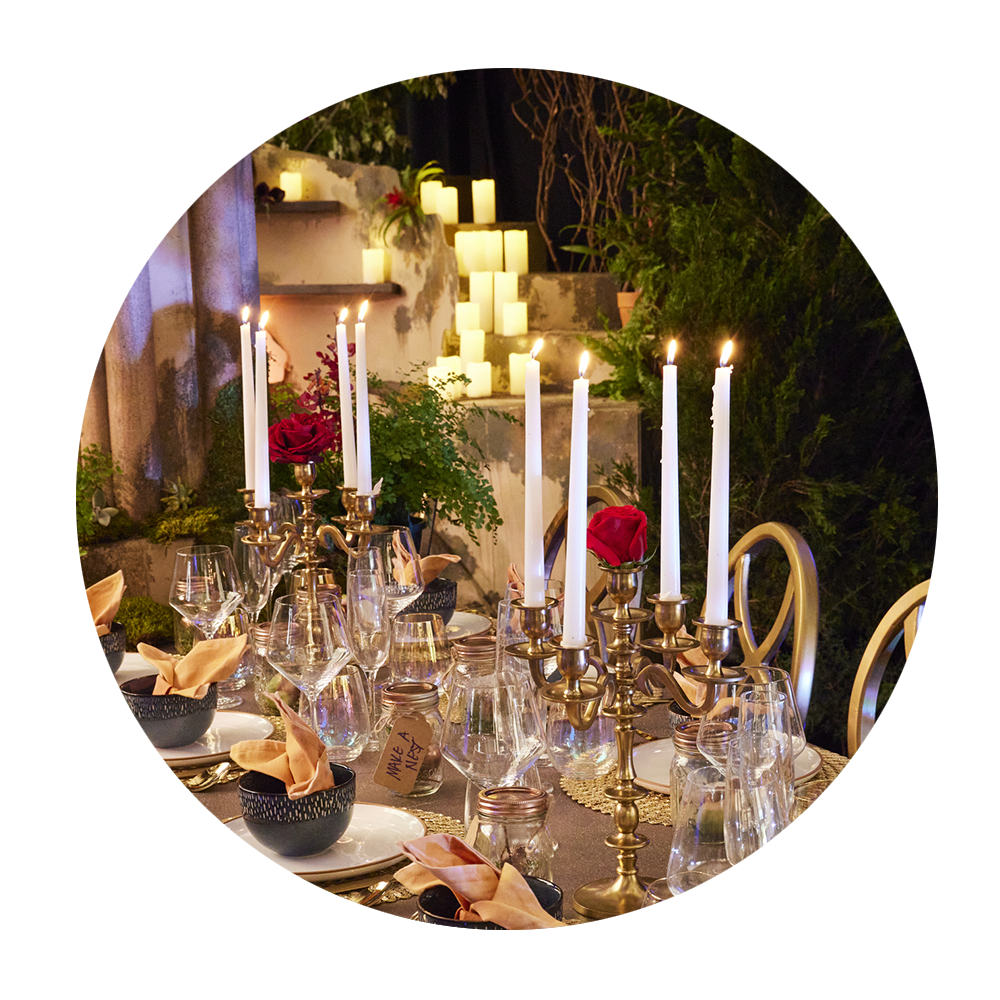
look at what others are doing
“Watch and learn tricks and just copy people, and then get inspiration and do your own thing.”
An Eye for Action
From the mound to the mountain, Blake Gordon ’03 has captured life on the edge.
Charting Her Course
From Auburn’s campus to the world’s most advanced warships, Emily Curran ’10 has never forgotten where she found her footing.
Building a Brand, Cultivating a Community
A fashion emergency and a social media surge helped Kayla Jones ’18 launch her brand Women With Ballz.
An Eye for Action
From the mound to the mountain, Blake Gordon ’03 has captured life on the edge.
Charting Her Course
From Auburn’s campus to the world’s most advanced warships, Emily Curran ’10 has never forgotten where she found her footing.
Building a Brand, Cultivating a Community
A fashion emergency and a social media surge helped Kayla Jones ’18 launch her brand Women With Ballz.


